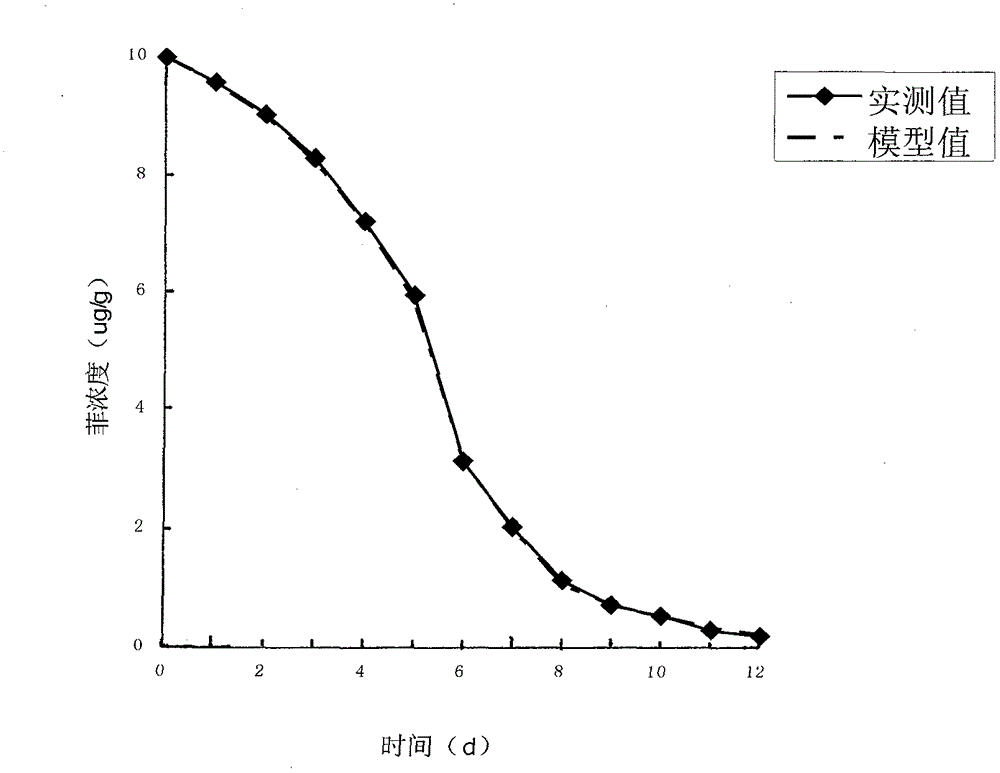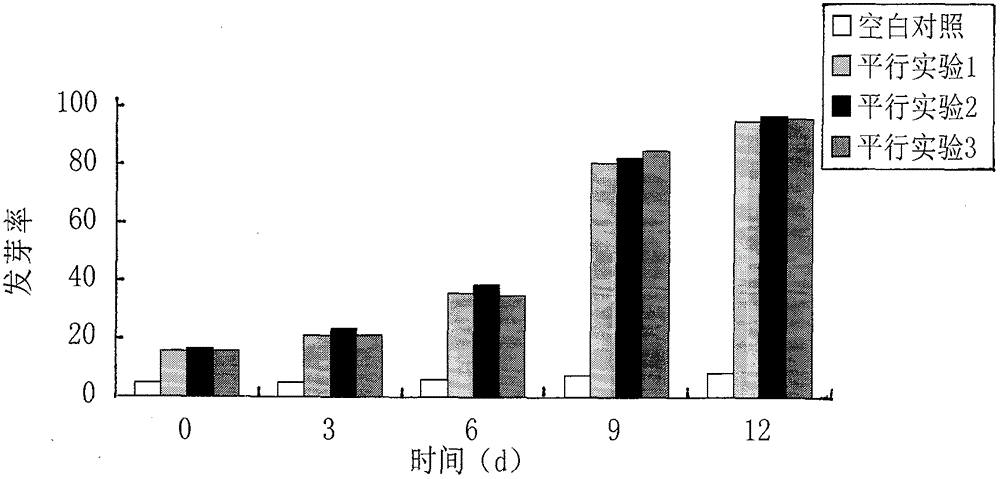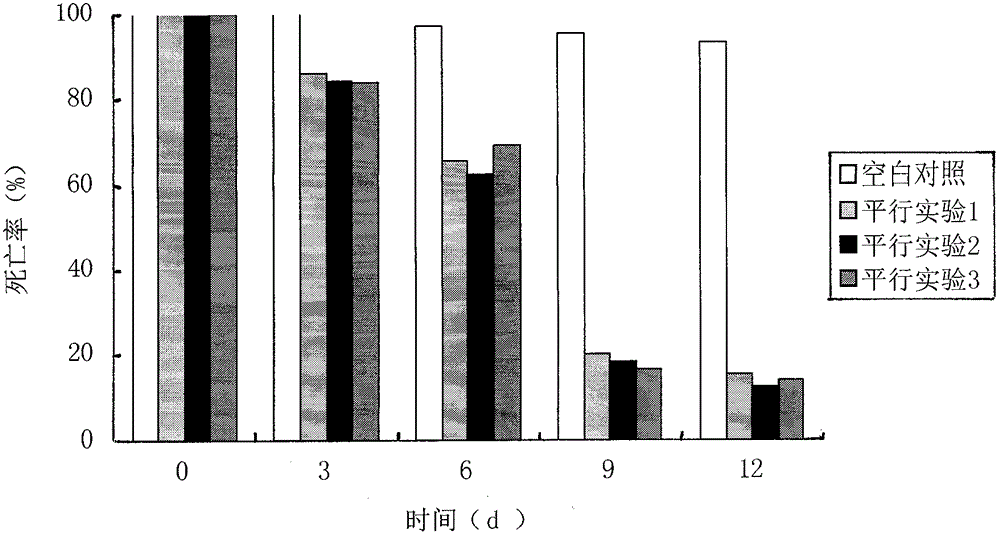Assessment method of restoration effect of phenanthrene-polluted soil
A technology of polluted soil and evaluation method, applied in the restoration of polluted soil and other directions, can solve the problems of competition impact and soil ecological risk, and achieve the effects of simple model, real-time verification accuracy, and low earthworm mortality.
- Summary
- Abstract
- Description
- Claims
- Application Information
AI Technical Summary
Problems solved by technology
Method used
Image
Examples
Embodiment 1
[0034] Example 1: Establishment of an evaluation method for the remediation effect of phenanthrene-contaminated soil
[0035] On the basis of the existing technology, the model is used to predict the degradation time and degradation rate, and then the two living indicators of corn germination rate and earthworm mortality are selected to form a comprehensive and accurate evaluation method.
[0036] The evaluation method includes three indicators: model establishment, maize germination rate and earthworm mortality.
[0037] (1) Establish the growth kinetics model of the phenanthrene-contaminated soil-degrading bacteria: by establishing the objective function equation of the growth kinetic parameters of the phenanthrene-contaminated soil-degrading bacteria:
[0038] F ( S ) = K R 0 ln S 0 ...
Embodiment 2
[0049] Example 2: Establishment of growth kinetic equation model of phenanthrene-contaminated soil degrading bacteria
[0050] Describe the rate of cell growth in terms of cell concentration:
[0051] By assuming that the available bacterial composition is represented by a parameter, that is, the change of bacterial concentration X over time:
[0052] dX dt = μX - - - ( 1 )
[0053] The growth of phenanthrene-contaminated soil-degrading bacteria is as follows:
[0054] μ = μ m S K + S - - - ( 2 )
[0055] Substituting formula (2) into formula (1), we get
[0056] dX ...
Embodiment 3
[0085] Embodiment three: corn germination test
[0086] (1) Activation culture of bacterial strains: LB culture medium is used to activate and culture the strains of phenanthrene-contaminated soil-degrading bacteria to obtain bacterial liquid for future use.
[0087] (2) Fermentation culture of strains: insert the bacterial solution of step (1) into the culture medium of step (1) according to the inoculation amount of 5% by volume; culture at 20°C-40°C, initial pH 4.0-8.0, and shake for 24h- After 72h, after the logarithmic growth phase of the thalli, centrifugation was carried out to obtain the thallus;
[0088] (3) Inoculation and degradation of the soil sample: the bacteria in step (2) are mixed with the soil sample containing the polycyclic aromatic hydrocarbon phenanthrene in a ratio of 10-50:100 by weight;
[0089](4) Select plump and similar-sized corn seeds, add the soil in step (3), and bury 20 seeds evenly in each flowerpot on the 0th, 3rd, 6th, 9th, and 12th days r...
PUM
 Login to View More
Login to View More Abstract
Description
Claims
Application Information
 Login to View More
Login to View More - R&D
- Intellectual Property
- Life Sciences
- Materials
- Tech Scout
- Unparalleled Data Quality
- Higher Quality Content
- 60% Fewer Hallucinations
Browse by: Latest US Patents, China's latest patents, Technical Efficacy Thesaurus, Application Domain, Technology Topic, Popular Technical Reports.
© 2025 PatSnap. All rights reserved.Legal|Privacy policy|Modern Slavery Act Transparency Statement|Sitemap|About US| Contact US: help@patsnap.com



